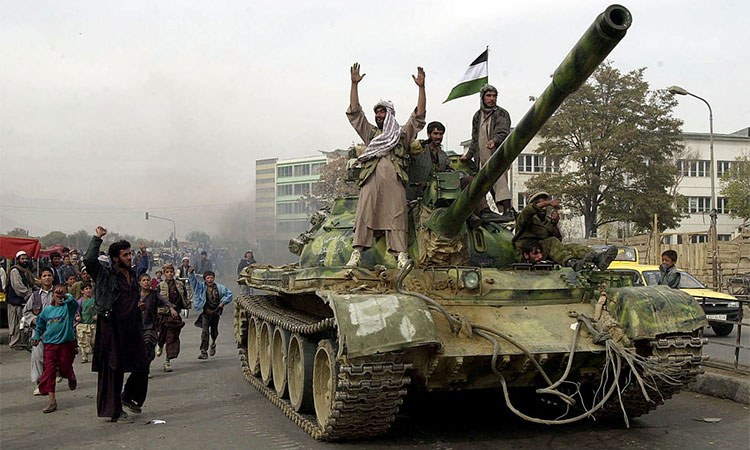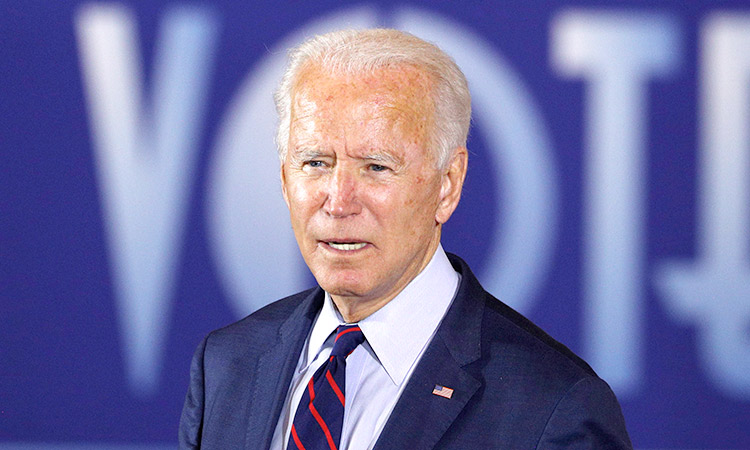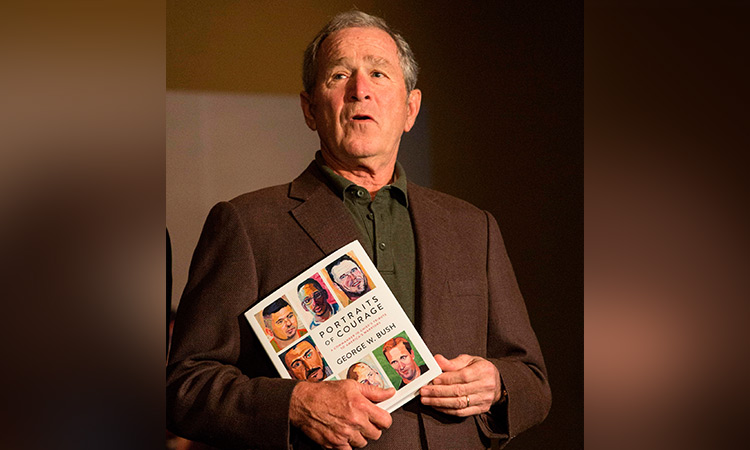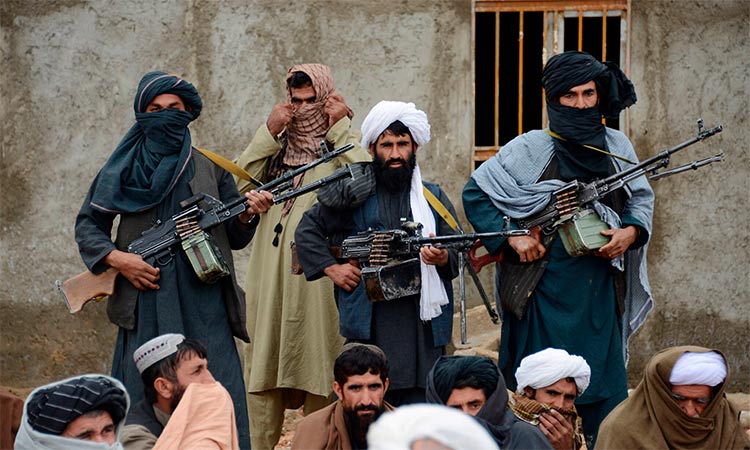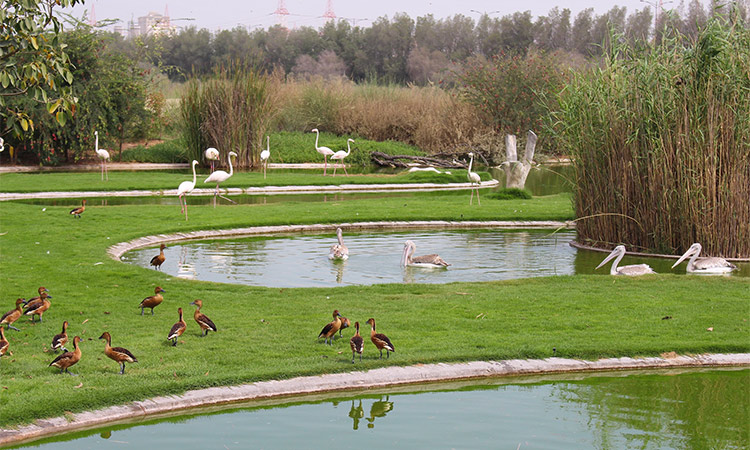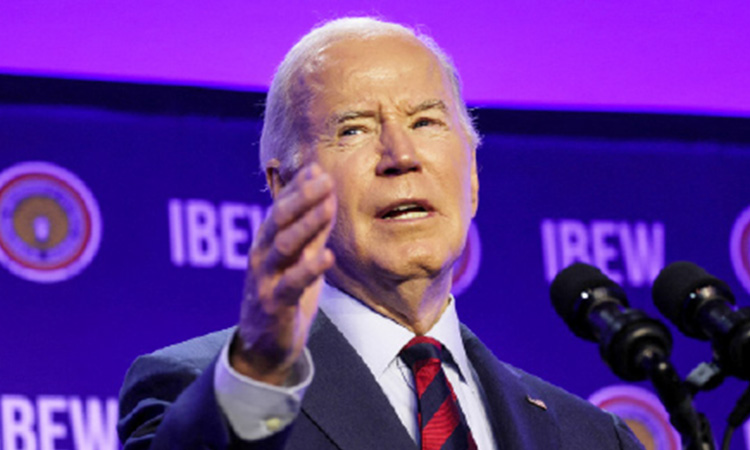Hapless Afghans paying the price for US mess

Michael Jansen
The author, a well-respected observer of Middle East affairs, has three books on the Arab-Israeli conflict.
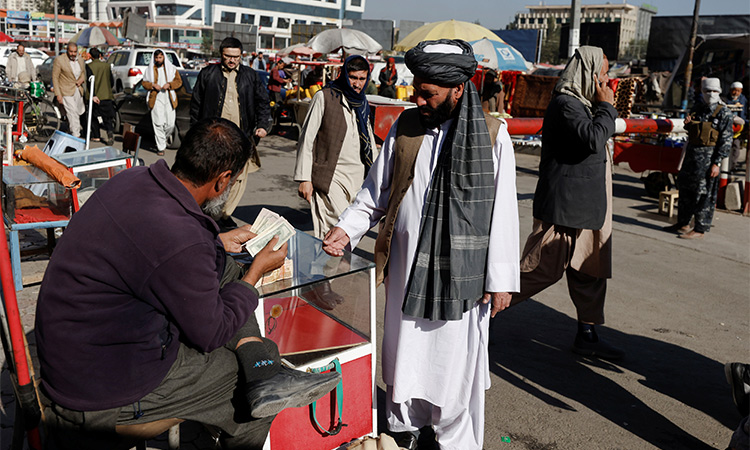
An Afghani man gets his currency exchanged at a roadside currency stall in Kabul.
Warsaw has staunchly rejected migrants since the flow into Europe peaked in 2014-15 and was mainly absorbed in Germany.
Since August, when the Taliban consolidated its control over Afghanistan, 300,000 Afghans have crossed into Iran. Arrivals have reached 4,000-5000 daily, roughly the total number massed on the Polish-Belarusian border. Nevertheless, Afghan refugees entering Iran are ignored by the EU.
There is no solidarity with Iran which already hosts 3.6 million Afghans and receives limited funding and humanitarian assistance to care for the refugees. Consequently, Iran has recently deported 28,000 Afghans to their homeland.
Following last week’s visit to Iran, Norwegian Refugee Council head Jan Egeland told the Associated Press, “Iran cannot be expected to host so many Afghans with so little support from the international community.
“There must be an immediate scale-up of aid both inside Afghanistan and in neighbouring countries like Iran, before the deadly winter cold.” He pointed out that harsh conditions are propelling many Afghans to undertake uncertain and perilous journeys to Europe.
UN agencies estimate 22.8 million people, more than half of Afghanistan’s 39 million, face acute food insecurity in comparison with 14 million two months ago. Among the most vulnerable are 3.5 million Afghans displaced within the country.
The abrupt halt to international budgetary funding and freezing of Afghan central bank reserves in the US has exacerbated the economic crisis in the country and deepened the misery of Afghan civilians who are dependent on foreign aid agencies, prompting tens of thousands to flee to neighbouring countries.
Egeland said, “There is no economy, there is very little assistance, and there is too little shelter and food for millions and millions in need.”
Iran has long been a preferred destination for Afghan refugees who have easily crossed the 900-kilometre border between the two countries.
However, since 2018 when the US withdrew from the agreement for limiting Tehran’s nuclear programme in exchange for sanctions relief and imposed 1,500 sanctions on Iran, its economy has contracted and COVID has made Iran the most heavily infected country in the region. Economic meltdown, anti-Afghan discrimination, and COVID have goaded thousands of Afghans to leave Iran for Europe.
Turkey has built most of a 241-kilometre concrete wall on its border with Iran to prevent Afghans from entering that country, which already hosts nearly four million refugees, mostly Syrians. Last week, Ankara also partially halted migrant flights to Belarus, partly stemming the flow to the Polish border.
The surge of Afghans fleeing their country has been caused by the failure of the US-backed Kabul government to administer that war-torn country effectively and, most importantly, the military to defend it against the Taliban and other radical factions, including Daesh and al-Qaeda.
Afghan, US and other critics of the ousted Afghan government contend mismanagement and corruption led to its sudden fall and the Taliban take-over.
This would not have happened if the US-recruited, trained, and armed Afghan military had been at full strength and effective. If it had stood its ground and held the line, the Taliban would never have been able to regroup and reassert itself after its defeat by US forces in 2001.
Afghanistan’s former Finance Minister Khalid Payenda has, belatedly, admitted that most of the 300,000 Afghan troops, airmen and police, touted as their country’s defenders, did not exist.
In an interview with the BBC, which has been largely ignored by other world media, he said “ghost soldiers,” names of non-existent personnel, were placed on official lists so that generals and other officers could collect their salaries. Some of these “ghost soldiers” were totally fictitious, others were deserters and martyrs.
Payenda said that provincial chiefs drew up rolls and calculated salaries and expenses, which “were always inflated.” Commanders kept the bank cards of the “ghost soldiers” and collected their pay.
“Ghost soldiers” were identified as a problem as early as 2016 by the US Special Envoy for Afghanistan Reconstruction which argued that “neither the United States nor its Afghan allies know how many Afghan soldiers and police actually exist, how many are in fact available for duty, or, by extension, the true nature of their operational capabilities.” In its latest report to Congress, the agency expressed “serious concerns about the corrosive effects of corruption... and the questionable accuracy of data on the actual strength of the force.”
If Payenda is correct, the number of defenders Kabul could muster would be 40-50,000. This being the case why did Donald Trump, his successor Joe Biden, and US and Nato commanders rely on the falsified number of 300,000 troops and police which they claimed could mount an effective defence against the Taliban? It was estimated it had a core strength of 60,000 that could rise to 200,000 if joined by allied militias.
The answer is, of course, Trump and Biden lied since they were determined to pull out of Afghanistan whatever the price. This price has not been paid by the US and its Nato allies but by the people of Afghanistan who face harsh and disorganised Taliban rule, Western sanctions, unemployment, persecution, famine, and rejection when they flee their country.
The US, in particular, had no excuse for overstating the troop strength of the Afghan military. Washington should have learned in Iraq that misrepresenting the situation is risky.
Corruption, “ghost soldiers” and low morale enabled Daesh to invade Iraq in 2014 and take over more than one-third of that country, including its second city Mosul, and proclaim a false “caliphate.”
Once Mosul fell to Daesh, the US, which had withdrawn combat troops at the end of 2011, had to redeploy forces and mount an air campaign against Daesh while the understrength Iraqi army was reinforced by pro-Iran Shia militias which mounted ground operations.
The blowback in Iraq has been the rise of pro-Iran militia commanders as a major political force in that country. This development was rejected in the October parliamentary election by the majority of Iraqis who dramatically reduced the number of seats in the national assembly held by militia- based parties.
Like Afghans, Iraqis are paying a high price for the failure of the US and Nato to provide their countries with competent military forces. To make matters worse, when they flee their conflicted countries, Afghans and Iraqis are rejected for asylum by the US and Europe. Having made a mess of both Afghanistan and Iraq, the US and its allies refuse to accept the human consequences of their actions.
